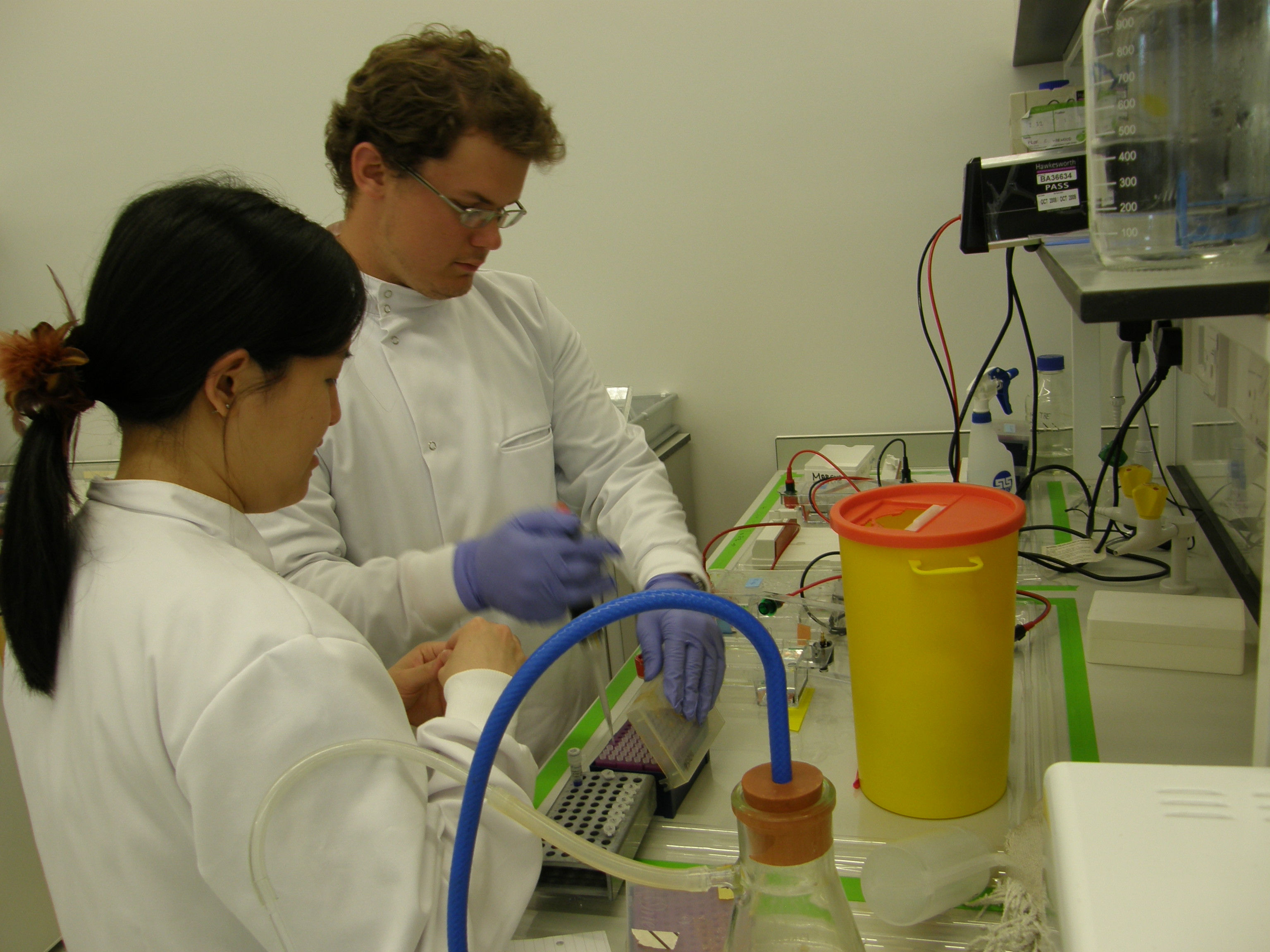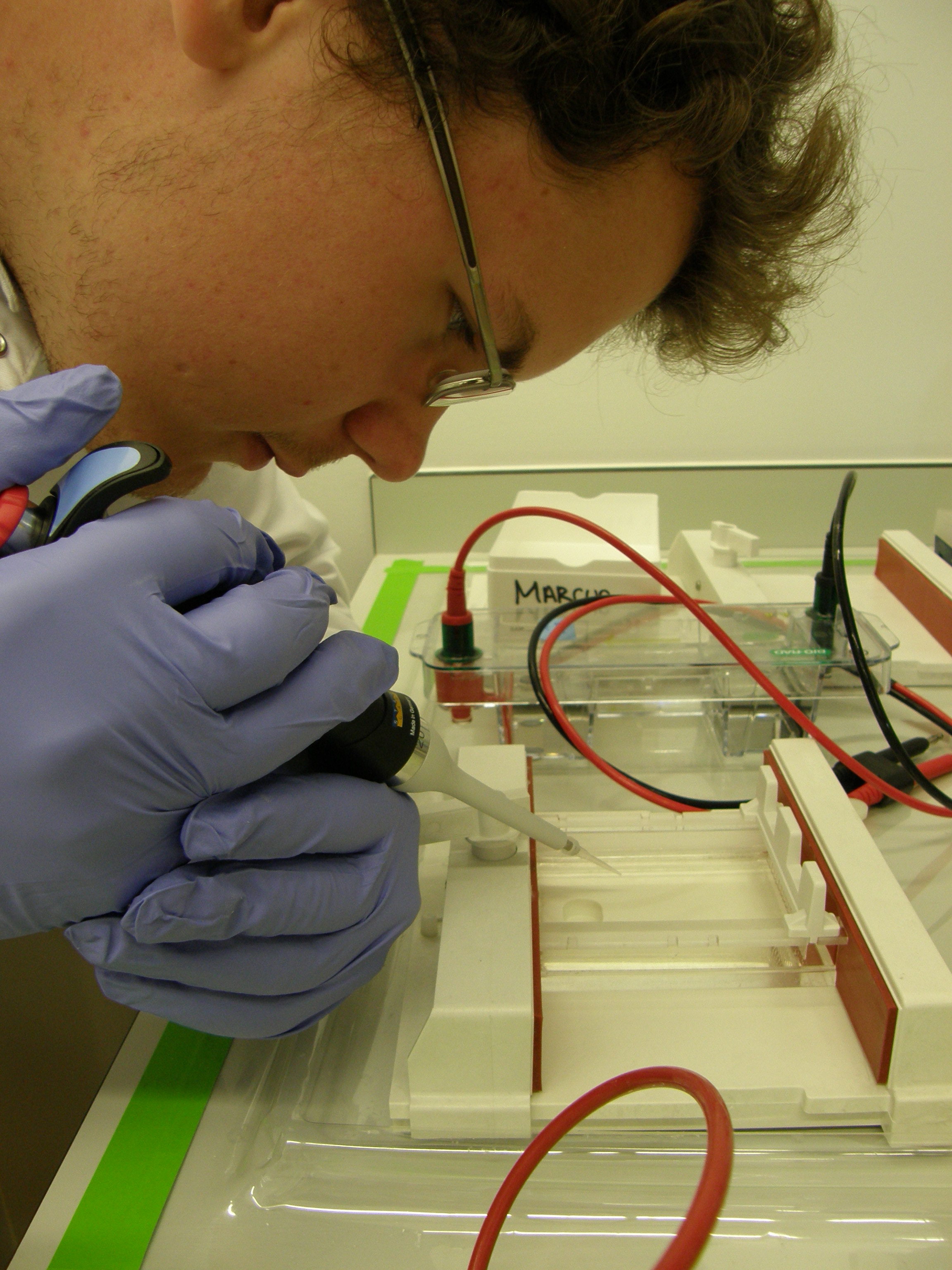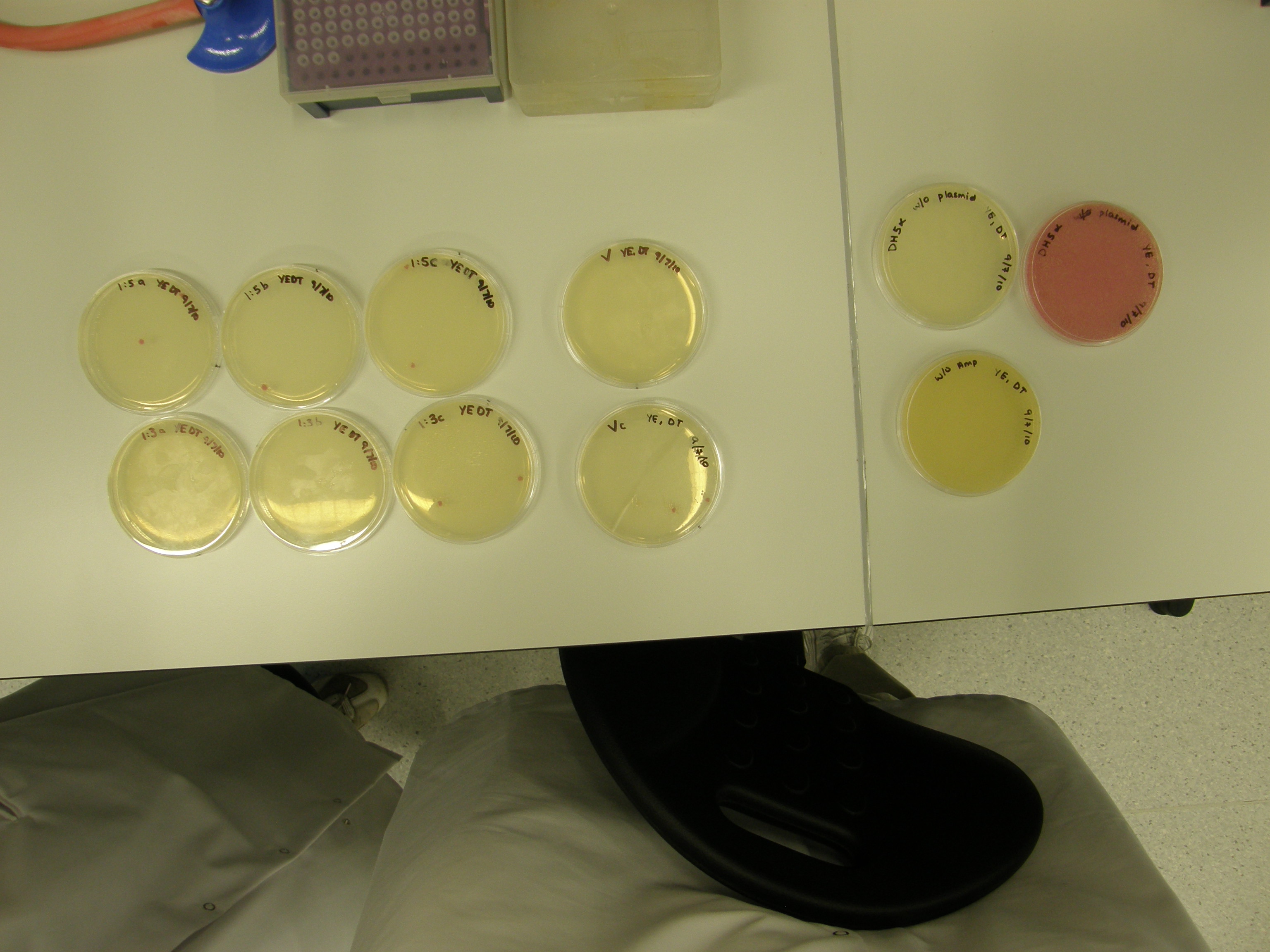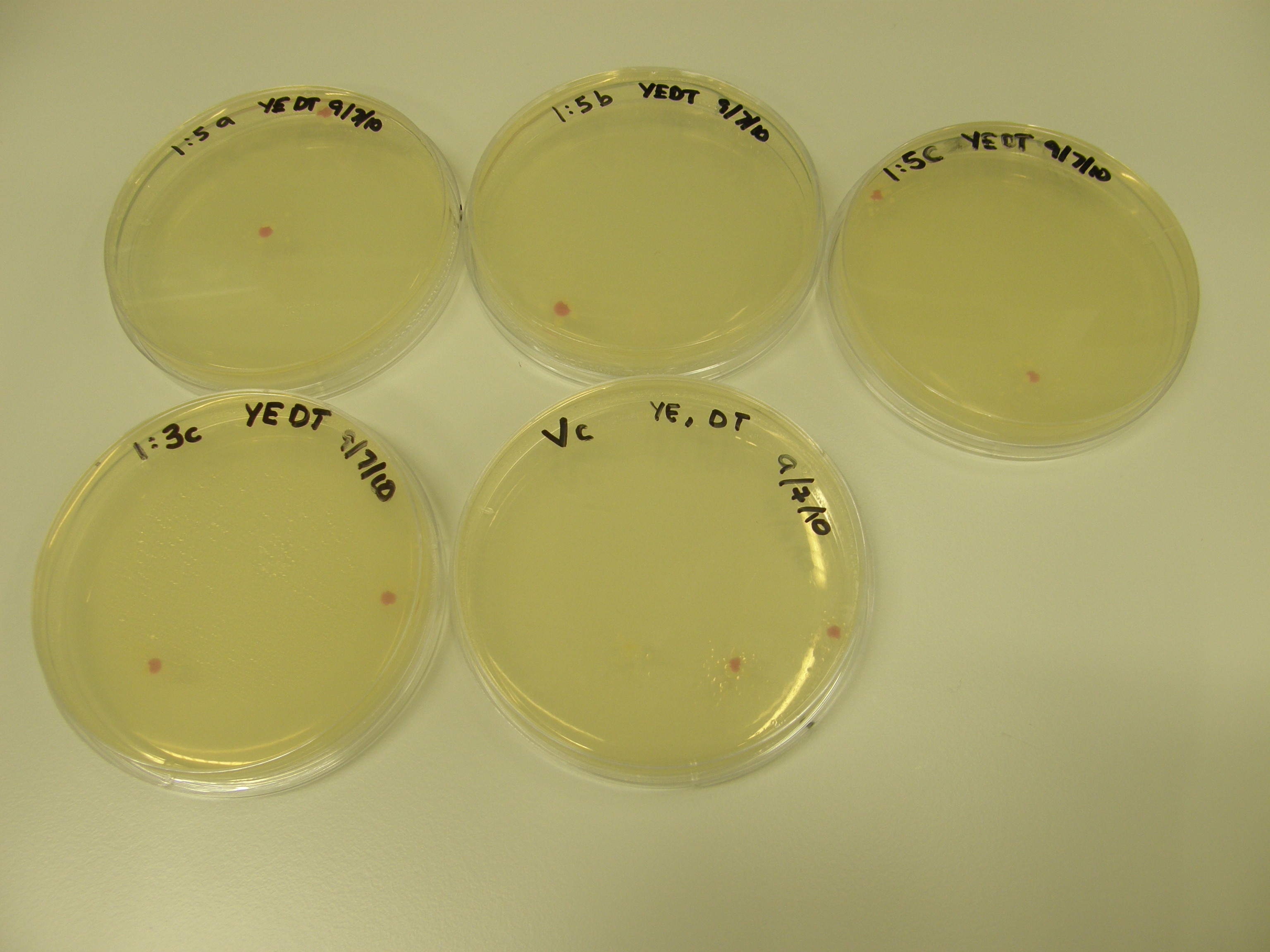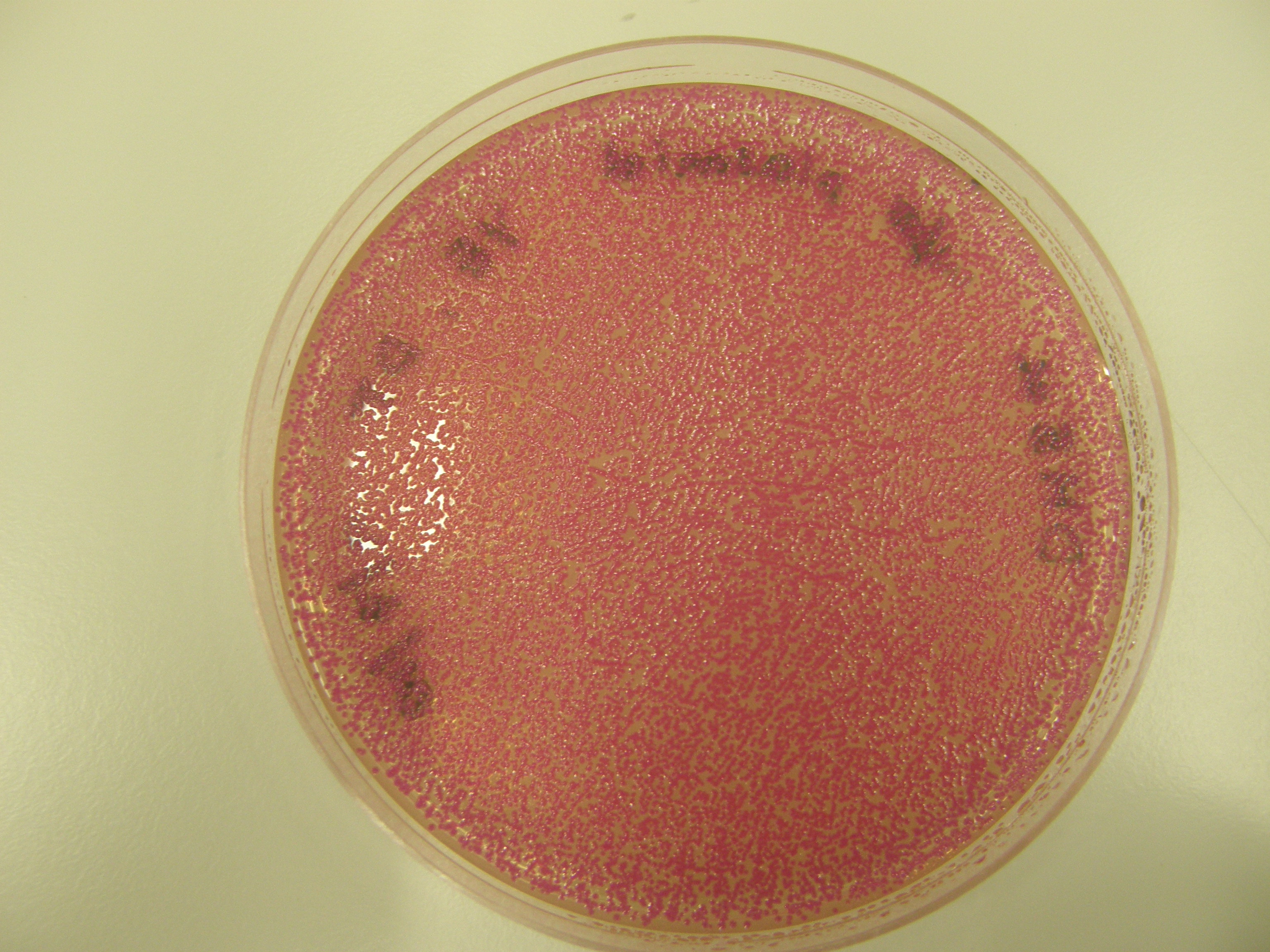Team:Newcastle/12 July 2010
From 2010.igem.org

| |||||||||||||
| |||||||||||||
12 July 2010
Contents |
LacI BioBrick Construction
Aims
To use PCR to extract lacI (promoter, ribosome-binding site (RBS) & coding sequence (CDS)) from plasmid pMutin4 and ligate into vector pSB1AT3 in front of red fluorescent protein (RFP).
Summary:
- Colony PCR
- Streak plate
- Miniprep PCR - of colonies that worked
Materials
- PCR reagents
- LB plus ampicillin plates
Protocols
Colony PCR
Of the 11 plates with colonies grown 7 were selected for screeneing by colony PCR and Streak plating.
Colony PCR is a rapid way to check if the desired sequence is now present in the vector. Unfortunately none of the colonies had the desired sequence integrated into the vector.
It seems likely that the colonies selected were present due to the degradation of ampicillin in the plates.
7 Tubes were labelled 1-7 (+ a control)
The quantities for the PCR are as follows:
Please refer to PCR. The melting temperature, Tm, of this experiment is 54°C.
Note We used 1 minute of extension time because the size of lacI is 1.4kb.
Note There are 2 possible reasons for red colonies formed:
- partial digest - rejoins without insert
- with insert
We need to tell the difference between the two.
Spread Plates
Overnight culture
The seven colonies that grew on the plates were cultured overnight. The protocol for growing an overnight culture was followed.
Tommorrow
We are going to take one of the colonies that have worked and possibly a whole plasmid prep.
 
|
 "
"
